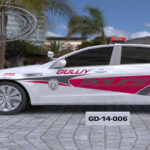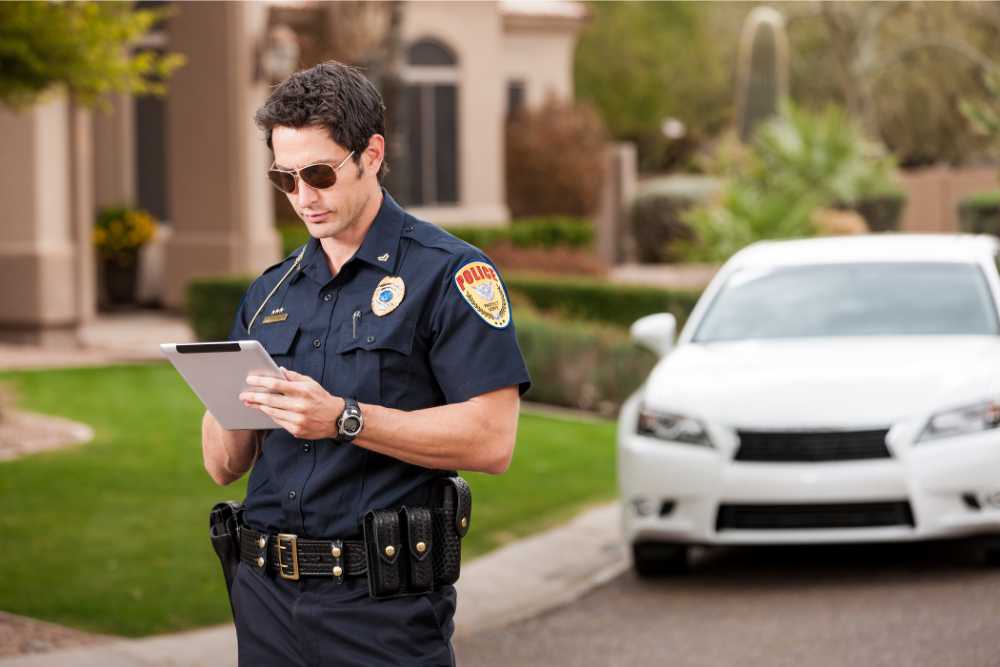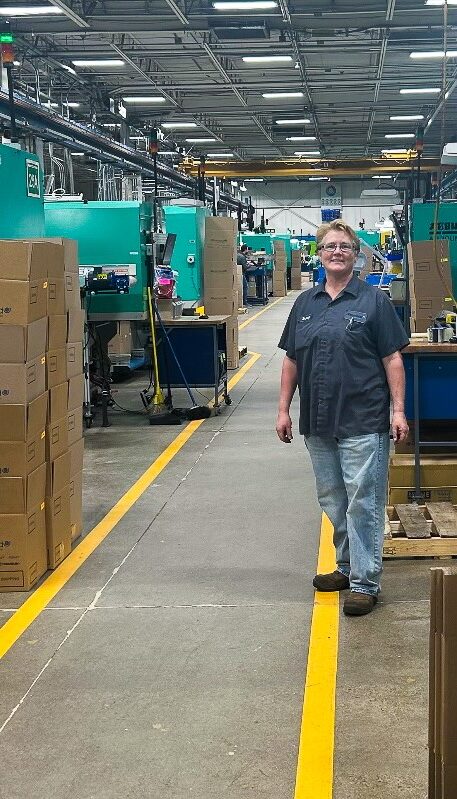Law enforcement vehicles serve so many purposes, even though the general public might only think of them in emergency situations. One aspect that often goes unnoticed is how much their appearance contributes to safety, authority, and clear communication.
Law enforcement vehicle graphics (particularly police graphics) might seem like they’re just decorative, but they also serve practical, everyday functions.
From bright chevrons that boost visibility to ghost graphics that allow for discretion, the choices agencies make when designing their fleets impact how clearly they’re recognized, how safe they are to operate, and how professionally they represent their departments.
Every decal, stripe, or wrap is there for a reason. Whether it’s helping traffic clear a path, creating a cohesive fleet look, or making sure a unit is seen at night, vehicle graphics are working behind the scenes to support daily operations.
Police Graphics 101
Today, let’s look at how these graphics function across different use cases and why they continue to be such a meaningful part of law enforcement design.
Chevrons That Get Noticed
Chevron striping is one of the most common and useful design elements found on public safety vehicles. These angled stripes, usually placed on the rear of a car or truck, are there to improve visibility, especially in dark or high-traffic environments. They’re meant to catch the attention of passing drivers and alert them to slow down, steer clear, or stay alert.
When made with reflective vinyl, chevrons are even more noticeable. They create contrast between the vehicle and its surroundings, making it easier to spot from a distance or in motion. For officers parked on the shoulder of a busy road or helping direct traffic at night, this visibility is a major safety factor.
Agencies typically choose from a few common layouts depending on the size of the vehicle and how visible they want the striping to be.
Chevrons can come in six-inch or three-inch widths, in single- or double-color designs, and in standard colors like red, yellow, black, or white. With these options, departments can adapt visibility features to suit the unique conditions in their communities.
Decals That Represent Your Fleet
While chevrons help people see the vehicle, decals tell them who it belongs to. One of the most important uses of law enforcement graphics is identification. Door decals—usually found on the driver and passenger doors—let the public know which department the vehicle represents.
These decals often include the department’s name, logo, badge, or shield. They reinforce the agency’s authority while also building public trust. In a time when clear communication matters, having clearly marked vehicles helps reduce confusion and ensures that the community knows who is serving them.
Agencies can choose different production methods for these decals depending on their needs. Some prefer digital printing, which creates detailed, full-color images and includes a UV protectant. Others use cut and layered vinyl for its simplicity and durability.
For large fleets or agencies working on a tight budget, screen printing can be a smart option because it offers consistent quality across high-volume orders.
Each method comes with its own set of benefits, but all of them help give departments that professional, recognizable look they’re after.
Ghost Graphics That Blend In
In some cases, standing out isn’t the goal. For certain units—such as those focused on highway enforcement, surveillance, or special investigations—low-visibility graphics may be the better option. This is where ghost graphics come in.
Ghost graphics are nearly invisible during the day. They’re made to match the vehicle’s paint color as closely as possible so they blend in. Once the sun goes down, however, these same graphics reflect light. This means the vehicle is visible to drivers while maintaining a low profile in daylight.
Departments that use ghost graphics often want a balance between visibility and discretion. These designs allow for official marking without drawing too much attention. The result is a vehicle that blends into its environment but still meets safety and legal visibility requirements when it matters most.
This type of graphic is gaining popularity, and for good reason. With them, officers have the flexibility to operate discreetly without compromising safety.
Wraps That Protect and Present
Full or partial vehicle wraps deliver another way for departments to customize their fleets. Wraps also help protect the vehicle while offering a platform for consistent branding across the department.
A full wrap covers the entire surface of the vehicle. This protects the original paint from sun damage, minor scratches, and other wear. For larger vehicles with flat surfaces, such as command vans or SUVs, full wraps offer a way to create a bold, unified design.
Partial wraps, on the other hand, are ideal for vehicles with curved or complex shapes. They’re also a nice fit for departments with smaller budgets. With a partial wrap, agencies can highlight critical areas—like the doors or back panels—without covering the entire vehicle.
These wraps can also be customized with gradients, textures, or large-format designs that aren’t possible with standard decals. Whether the goal is protection or presentation, wraps give agencies more control over the look and longevity of their vehicles.
Specialty Vehicles, Same Standards
Not every vehicle in a fleet is a cruiser or SUV. Many departments operate motorcycles, ATVs, mobile command units, boats, or golf carts. These specialty vehicles have different shapes and sizes, but they still need graphics that match the rest of the fleet.
Motorcycles may use smaller reflective panels or miniature decals to identify the department. Golf carts, often used on campuses or in airports, need scaled-down designs that stay readable in tight spaces.
Mobile command units, which are usually larger and contain multiple doors or compartments, benefit from full graphics that include:
- Identification
- Wayfinding
- Departmental branding
The goal is to keep every vehicle—no matter how big or small—consistent with the agency’s identity. With the right graphics, even the most unique vehicles can look like a natural part of the team.
Updating the Look
All vehicle graphics will wear down eventually. They start to peel, fade, or simply become outdated, and the speed at which this happens depends on many things, including the climate where these vehicles operate. But regardless of whether it’s due to weather exposure, changes in agency structure, or new design preferences, there often comes a point when a refresh is needed.
Rebranding a fleet can mean small updates or a complete overhaul. A department might switch from non-reflective decals to reflective ones to improve visibility. They may decide to add ghost graphics to certain units or change the badge design across the fleet.
Sometimes a rebrand is triggered by necessity. If a supplier discontinues a product or if decals begin to show signs of age, an update becomes the next logical step. Even small changes (like adjusting typography or switching materials) make for a cleaner, more modern appearance.
Departments don’t have to start over, either. Many companies offer reproduction services that work with existing artwork and layouts, so maintaining visual consistency while upgrading quality is more straightforward.
A Closer Look at Who Helps Make It Happen
Graphics are more than decoration. They help patrol vehicles stay safe, professional, and instantly recognizable. They support the goals of the department, improve safety for officers and the public, and build a connection between law enforcement and the communities they serve.
Departments interested in upgrading their fleet graphics can turn to experienced providers that understand the unique needs of public safety. One of those companies is Graphic Designs International, a long-standing manufacturer of law enforcement graphics for police, sheriff, fire rescue, and specialty units.
They offer a full range of options—from ghost graphics and chevrons to full wraps and custom decals—along with design services and art reproduction.











